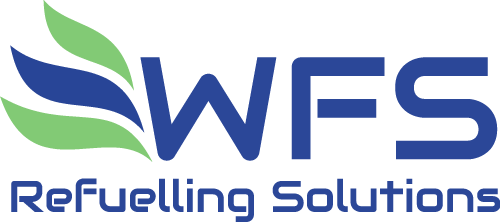What is AdBlue® Diesel Exhaust Fluid?
AdBlue® is the registered trademark for AUS32 (diesel exhaust fluid) and has become the solution of choice for diesel fleet operators working on cutting the concentration of mono-nitrogen oxides (NOx) in the exhaust emissions of their vehicles, with many businesses having already installed AdBlue® tanks to their vehicles in an attempt to meet reduction requirements on the continent.
Containing AdBlue® & Preventing Pollution
AdBlue® solution must be contained in a secure tank and dispensed with care. It is a pollutant to surface water and groundwater and has caused a number of serious incidents. Spills can occur due to the corrosion of pipework, or through misuse of filling equipment. The Environment Agency reserves the right to prosecute under Anti-Pollution Works Regulations should the correct conditions not be met.
– AdBlue® is a trademark of the Verband der Automobilindustrie e.V. (VDA).
AdBlue® Spills & What To Do
AdBlue® is an aqueous urea solution used to help modern diesel engines reduce their NOx (nitrogen oxide) emissions. Due to the latest EURO 6 emission regulations being brought into effect as of September 2015, AdBlue® is something that will become more and more commonplace.
For passenger vehicles, AdBlue® will generally just be topped up during a service unless they cover high mileage in which case a top-up may be needed using a plastic AdBlue® container purchased at a forecourt. This may change to an AdBlue® dispensing pump on a forecourt (as more and more cars start to use AdBlue®). On the commercial side, large fleet operators will more than likely start to store AdBlue® in bulk on-site to meet their needs.
Both of these lead to the potential of an AdBlue® spillage or leak, which may affect the environment (urea solutions are very harmful & polluting to surface & groundwater). Although AdBlue® is non-toxic, if spilt & not cleaned up immediately, it will crystallise upon drying. There is also the potential for it to enter open drains as well.
How To Avoid Spills & Deal With Them If They Happen
Here are a few tips on how to deal with a potential spill, as well as potentially stop one from taking place.
Firstly you should make sure that:
- Your container, pipework, & dispensing equipment are suitable for use with AdBlue®
- Secondary containment for the AdBlue® container & any ancillary equipment is available
- The dispensing area drainage is isolated from any & all surface water drains.
- If you have a trigger nozzle to dispense your AdBlue®, make sure your nozzle cannot be left in the open position.
- Make sure that you have appropriate emergency equipment to deal with large & small spills. For example, you could use spill kits, drain mats, pipe blocker, or permanent valves on drainage systems to provide containment.
- Make sure any spill kits used are suitable with water based products (ABKIT06A)
- Make sure you have an emergency plan as well as suitable training for dealing with spillages or other accidents (See incident response planning:PPG 21 for guidance to help you write your plan)
Although there are no current specific regulations that require AdBlue® to be stored in a certain manner, the environmental agency does state that if they believe there is a significant environmental risk they will use their enforcement powers to make sure you meet their good practice guidelines.
If you do come across an AdBlue® spill then act immediately. Use a spill kit to clean up any spill (& any other measures to stop the spill from spreading). Then rinse the area thoroughly with water to avoid any crystallisation.
– AdBlue® is a trademark of the Verband der Automobilindustrie e.V. (VDA).
